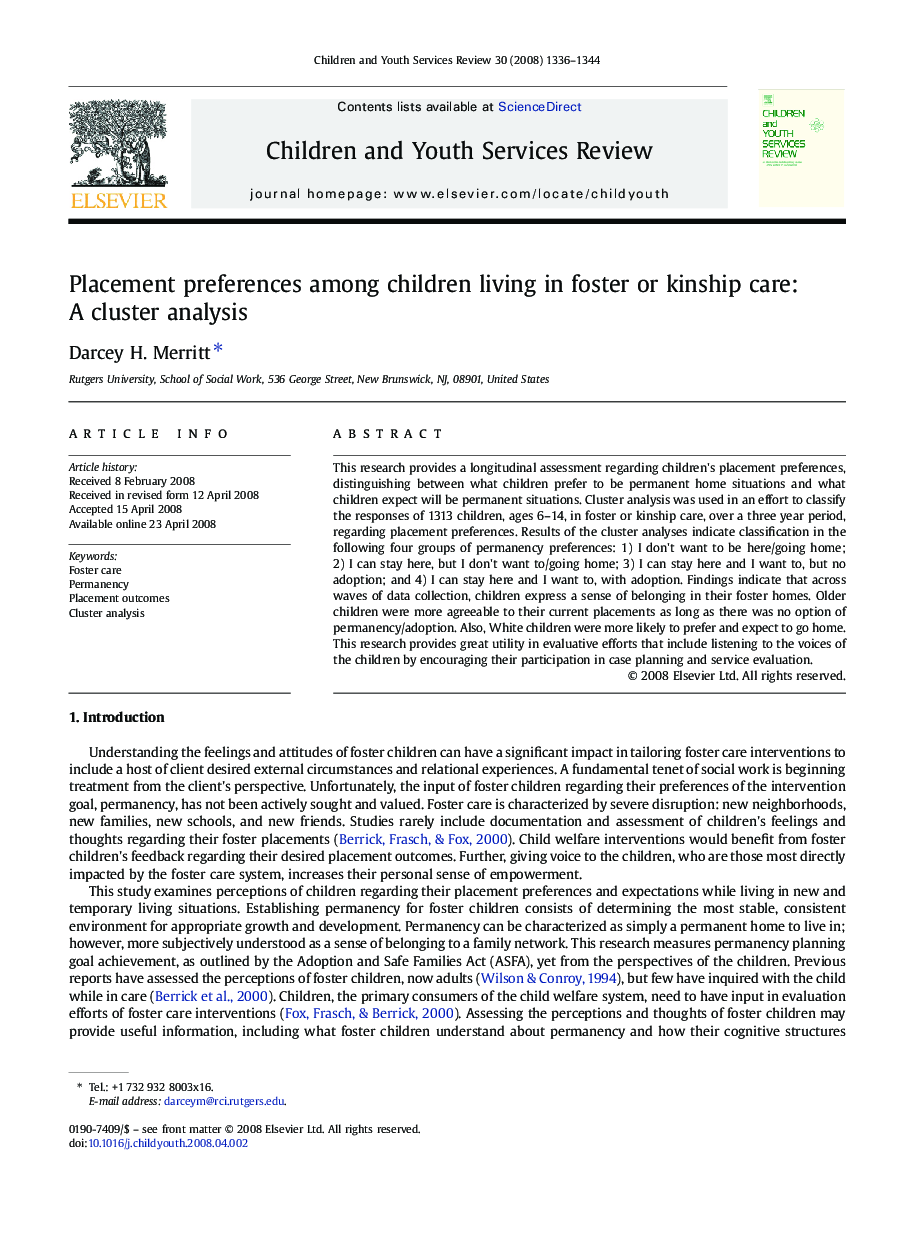| Article ID | Journal | Published Year | Pages | File Type |
|---|---|---|---|---|
| 346827 | Children and Youth Services Review | 2008 | 9 Pages |
This research provides a longitudinal assessment regarding children's placement preferences, distinguishing between what children prefer to be permanent home situations and what children expect will be permanent situations. Cluster analysis was used in an effort to classify the responses of 1313 children, ages 6–14, in foster or kinship care, over a three year period, regarding placement preferences. Results of the cluster analyses indicate classification in the following four groups of permanency preferences: 1) I don't want to be here/going home; 2) I can stay here, but I don't want to/going home; 3) I can stay here and I want to, but no adoption; and 4) I can stay here and I want to, with adoption. Findings indicate that across waves of data collection, children express a sense of belonging in their foster homes. Older children were more agreeable to their current placements as long as there was no option of permanency/adoption. Also, White children were more likely to prefer and expect to go home. This research provides great utility in evaluative efforts that include listening to the voices of the children by encouraging their participation in case planning and service evaluation.
